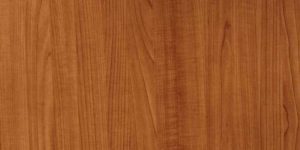Cherry wood is moderately hard and has a tendency to darken over time. It is considered a premium wood type and is pricier compared to other types of timber like oak or maple.
Cherry wood is a popular choice for furniture and woodworking projects due to its desirable qualities such as durability, rich color, and attractive grain patterns. However, it does come with some disadvantages. In terms of hardness, cherry wood falls in the moderate range on the Janka hardness scale.
This means that it is not as hard as some other hardwoods like maple or walnut. Additionally, cherry wood has a tendency to darken over time, which can be either a desirable characteristic or a drawback depending on personal preference. Despite these drawbacks, when finished properly, cherry wood can result in a stunning and luxurious look.
Characteristics
Cherry wood is a popular choice for fine furniture and interior woodworking due to its appealing characteristics. From rich coloration to distinct grain patterns, cherry wood possesses unique features that make it a sought-after material for various applications.
Color And Grain Of Cherry Wood
Cherry wood is celebrated for its warm, reddish-brown hues, which deepen over time, adding to its allure. The wood exhibits a fine, straight grain with occasional swirls, contributing to its visual appeal.
Janka Hardness Scale Of Cherry Wood
Cherry wood is prized for its moderate hardness, making it suitable for furniture and cabinetry. On the Janka hardness scale, cherry wood typically ranks around 950 lbs, offering durability while still being conducive to crafting with woodworking tools.
Workability
Cherry wood offers moderate workability due to its hardness, making it suitable for various projects. Known for its rich color and attractive grain patterns, cherry wood is a premium choice despite its higher price compared to other timber types.
Ease Of Working With Cherry Wood
Cherry wood is known for its workability, making it a popular choice among woodworkers. Its moderate hardness and fine texture contribute to its ease of working with various tools.
Here are some key points to understand about working with cherry wood:
- Cherry wood is relatively easy to cut, shape, and carve, making it suitable for intricate woodworking projects.
- It responds well to both hand tools and power tools, allowing woodworkers to achieve precise cuts and smooth finishes.
- Cherry wood has good dimensional stability, meaning it is less likely to warp or shrink when exposed to changes in moisture and temperature.
- It has excellent gluing properties, ensuring strong adhesive bonds.
- Cherry wood also takes stain and finish exceptionally well, allowing for a variety of color options and enhancing its natural beauty.
With its workable nature, cherry wood offers woodworkers the flexibility to bring their creative ideas to life without much hassle.
Challenges In Finishing Cherry Wood
While cherry wood is relatively easy to work with, there are a few challenges associated with finishing the wood. It’s important to be aware of these challenges to ensure a successful finishing process.
Here are some factors to consider when finishing cherry wood:
- Cherry wood tends to darken over time due to exposure to sunlight and oxidation. This natural darkening process can result in uneven coloration if not properly addressed.
- It is essential to choose the right finish for cherry wood to enhance its beauty while providing protection. Oil-based finishes, such as Danish oil or tung oil, are popular choices for cherry wood due to their ability to bring out its rich, warm tones.
- Preparation is key when finishing cherry wood. It is advisable to sand the wood thoroughly and remove any imperfections to achieve a smooth surface that absorbs finish evenly.
- Applying multiple coats of finish and allowing sufficient drying time between each coat helps achieve a durable and long-lasting finish on cherry wood.
By understanding these challenges and employing the right techniques, woodworkers can achieve stunning results when finishing cherry wood.
Comparisons
The hardness of cherry wood is a crucial factor to consider when choosing the right wood for your project. Let’s delve into some key comparisons to understand how cherry wood stacks up against other popular wood types.
Cherry Wood Vs. Maple: Which Is Harder?
Cherry wood and maple are both sturdy options for woodworking projects.
- Cherry wood has a Janka hardness rating of around 950, signifying its durability.
- Maple, on the other hand, boasts a Janka hardness rating ranging from 1450 to 1500, making it slightly harder than cherry wood.
Cherry Wood Vs. Walnut: A Durability Comparison
When comparing cherry wood to walnut in terms of hardness and durability:
- Cherry wood typically has a Janka hardness rating of 950.
- Walnut, on the contrary, has a Janka hardness rating that falls between 1010 and 1100, making it marginally harder than cherry wood.
Disadvantages
Cherry wood, while prized for its beauty and durability, comes with its own set of disadvantages that need consideration before opting for this wood type.
Expense Of Cherry Wood
Cherry wood is considered a premium, fine-grade wood type, and it often comes with a hefty price tag. Compared to other types of timber such as oak or maple, cherry wood falls on the pricier side. The slow growth of cherry trees contributes to the rarity and value of the wood, making it a luxury choice that may not fit within every budget.
Tendency Of Cherry Wood To Darken Over Time
One significant concern with cherry wood is its tendency to darken over time, leading to a polarizing effect. While some appreciate the deepening richness of color that occurs, others may find it unfavorable. When considering cherry wood for furniture or other applications, the potential for darkening should be factored into the decision-making process.
Uses And Applications
Cherry wood is a versatile material that has been used for centuries in various applications. From traditional furniture making to modern interior design, cherry wood offers a combination of beauty and durability.
Traditional And Modern Uses Of Cherry Wood
Cherry wood has a rich history in traditional woodworking, especially in furniture making. Its warm, reddish-brown hue and distinctive grain pattern make it a popular choice for creating timeless pieces such as cabinets, tables, and chairs. The natural beauty of cherry wood adds an elegant and sophisticated touch to any room.
In addition to traditional uses, cherry wood has also found its place in contemporary design. Its versatility allows it to be incorporated into modern furniture designs, creating a seamless blend of classic and contemporary elements. From sleek and minimalist styles to rustic and farmhouse-inspired décor, cherry wood brings a touch of warmth and charm to any space.
Suitability For Carving And Woodworking Projects
Cherry wood is prized by woodworkers and carvers for its excellent workability. Its medium density makes it relatively easy to cut, shape, and carve, allowing artisans to create intricate and detailed designs. The tight, fine grain of cherry wood ensures clean and precise cuts, resulting in polished and professional-looking finished products.
Whether you are a seasoned woodworker or a DIY enthusiast, cherry wood provides endless possibilities. From delicate sculptures and decorative accents to functional items like bowls and utensils, cherry wood’s workability makes it a top choice for woodworking projects of all types and sizes.
In conclusion, cherry wood’s timeless beauty, durability, and versatility have made it a popular choice for a wide range of applications. From traditional furniture making to modern interior design, cherry wood adds an air of sophistication and warmth to any space. Its workability also makes it an ideal choice for carving and woodworking projects, allowing artisans to create beautiful and intricate designs. Whether you are looking for a classic or contemporary touch, cherry wood is sure to impress.
Expert Opinions
When it comes to determining the hardness of cherry wood, it is essential to consider the insights from woodworking experts. These professionals have vast experience working with various types of wood and can provide valuable information regarding cherry wood’s hardness.
Insights From Woodworking Experts
Woodworking experts agree that cherry wood is moderately hard, ranking at 995 on the Janka hardness scale. This makes cherry wood softer compared to maple, which scores 1,450 on the same scale. However, it is important to note that hardness is just one factor to consider when choosing a wood type for your projects.
According to the Mean’s Woodshop YouTube channel, cherry wood offers excellent workability. It is easy to cut, shape, and sand, making it a preferred choice for many woodworkers. The channel also mentions that cherry wood is relatively easy to find, making it accessible for woodworking projects.
In a video by DutchCrafters Amish Furniture, they highlight some key characteristics of cherry wood. They explain that cherry wood darkens over time, which adds to its appeal and charm. Additionally, they mention that cherry wood has a beautiful grain pattern that enhances the overall aesthetic of furniture or woodworking projects.
Another informative video, this time from Woodworkers Source, shares tips and secrets about working with cherry wood. They mention that cherry wood undergoes a natural color change over time, evolving into a deeper, richer shade. They also provide guidance on selecting the right boards, dealing with sapwood, and deciding when and how to finish cherry wood projects.
Customer Experiences With Cherry Wood
Considering customer experiences, cherry wood is highly regarded for its beauty and versatility. Many customers state that cherry wood adds an elegant and sophisticated touch to their homes. They appreciate the warm and rich colors that develop over time, creating a timeless appeal.
Customers also mention that while cherry wood is softer compared to other hardwoods, it still provides sufficient durability for furniture and cabinetry. Its workability allows for intricate designs and smooth finishes, making it a favorite among both professional woodworkers and DIY enthusiasts.
In conclusion, the expert opinions of woodworking professionals and the positive experiences shared by customers confirm that cherry wood, although moderately hard, offers numerous benefits for woodworking projects. Its workability, beauty, and evolving color make it a worthwhile choice for those seeking a touch of elegance in their creations.

Frequently Asked Questions Of How Hard Is Cherry Wood
What Are The Disadvantages Of Cherry Wood?
Cherry wood is costly and tends to darken over time. It’s a premium wood type, more expensive than oak or maple.
Why Is Cherry Wood So Expensive?
Cherry wood is expensive because it has desirable qualities like durability, rich color, and attractive grain patterns. It is considered a premium and fine-grade wood type. Cherry trees grow slowly, making the wood relatively rare and valuable.
Which Wood Is Harder Maple Or Cherry?
Cherry wood is softer than maple, scoring 950 on the Janka hardness scale, while maple scores 1450.
Is Cherry Wood Harder Than Walnut?
Cherry wood is softer than walnut according to the Janka hardness scale.
Conclusion
Cherry wood is a desirable and premium wood type with unique characteristics. While it may be more expensive and darken over time, it offers durability, richness in color, and attractive grain patterns. When it comes to hardness, cherry wood falls in the moderately hard category.
Despite its challenges in finishing and burning easily, cherry wood can be a stunning choice for furniture and carving projects. Consider cherry wood if you appreciate its distinct beauty and are willing to invest in its quality.


